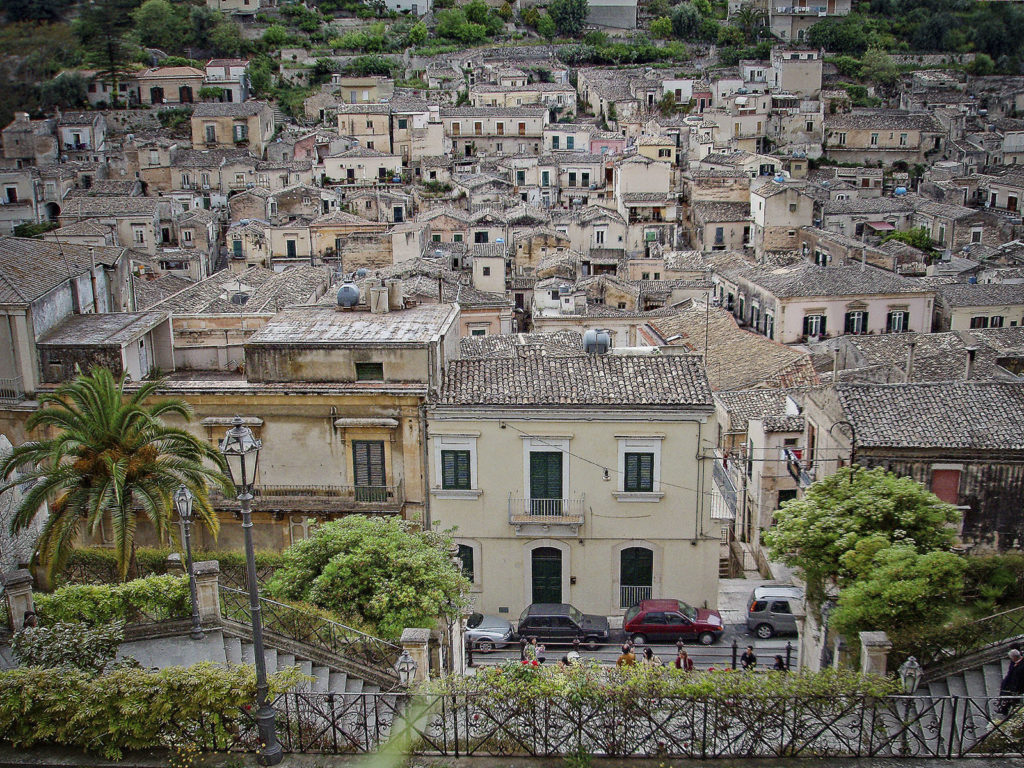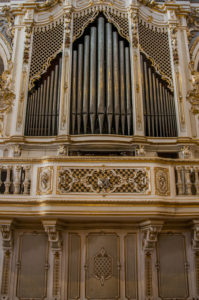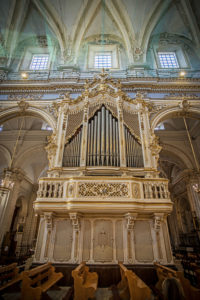The staircase of San Giorgio, besides being an important link between the upper and lower cities of Modica, is one of the best panoramic places where you can fully appreciate the city’s urban structure. A scenographic point that establishes a visual union between the two ridges where the city stands.

On a visit to the Cathedral of San Giorgio you can still appreciate the notes from the four keyboards, eighty stops and three thousand pipes of the monumental church organ designed by Casimiro Allieri, which still works today and is used for the most important liturgical celebrations. It is an instrument with a scenic architectural structure and exceptional sound quality that offers a sensory experience still appreciated today in a very sacred place.

